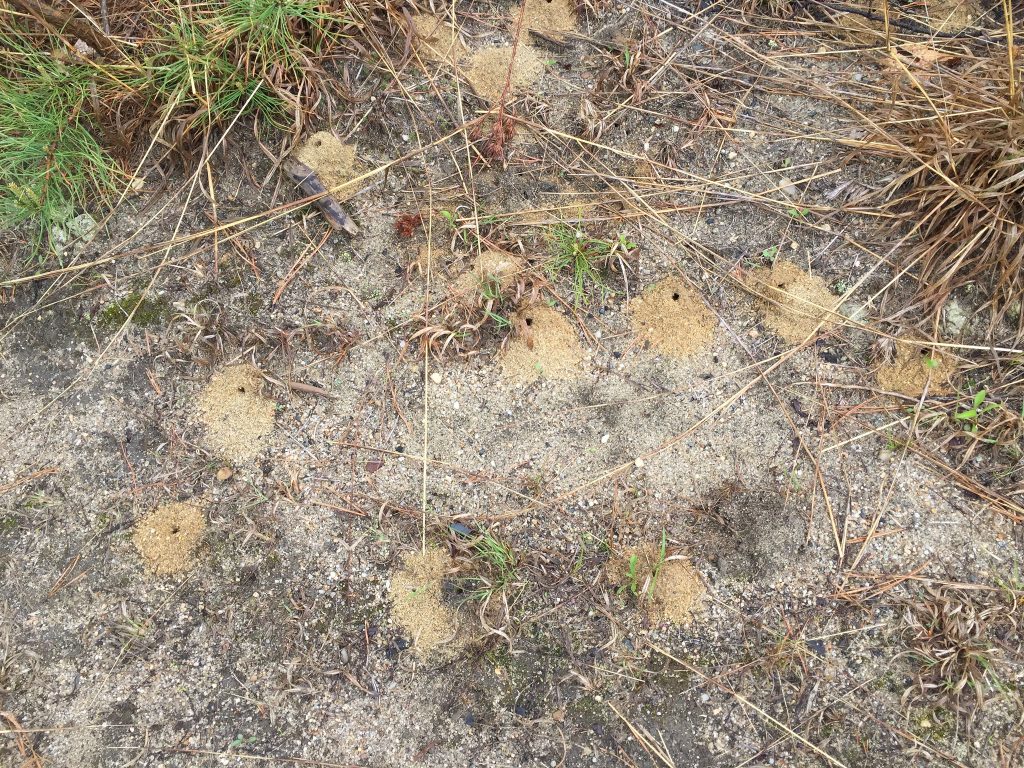Cellophane bees are very bad at social distancing. In early spring, hundreds to thousands of males and females aggregate on sandy soil and in pines and cedar trees. Males swarm females in large groups termed “mating balls” and, from each cluster, only one male will emerge victorious. Once mated, females get to business building nests. Though solitary, females work in a shared office space called a nesting aggregation for their three-week life. Sometimes, when a female gets bored, she’ll even dip into the nest of another female. Certainly, they do not keep six feet away from each other in the narrow tunnel of the nest. Don’t be like cellophane bees. Practice social distancing.

Nevertheless, observing cellophane bees is a great way to social distance while you’re at home and living your best #quarantinelife. In New England, you can find unequal cellophane bees (Colletes inaequalis) nesting in your backyard in late-March/early-April, provided the sod isn’t too thick. Watching cellophane bees be cellophane bees can be a fun distraction. And don’t worry about getting stung since they are quite docile. Here’s a short video to help you get started finding your own cellophane bee nests. If you do find some, take a photo and get in touch! We’d love to hear what you find.


